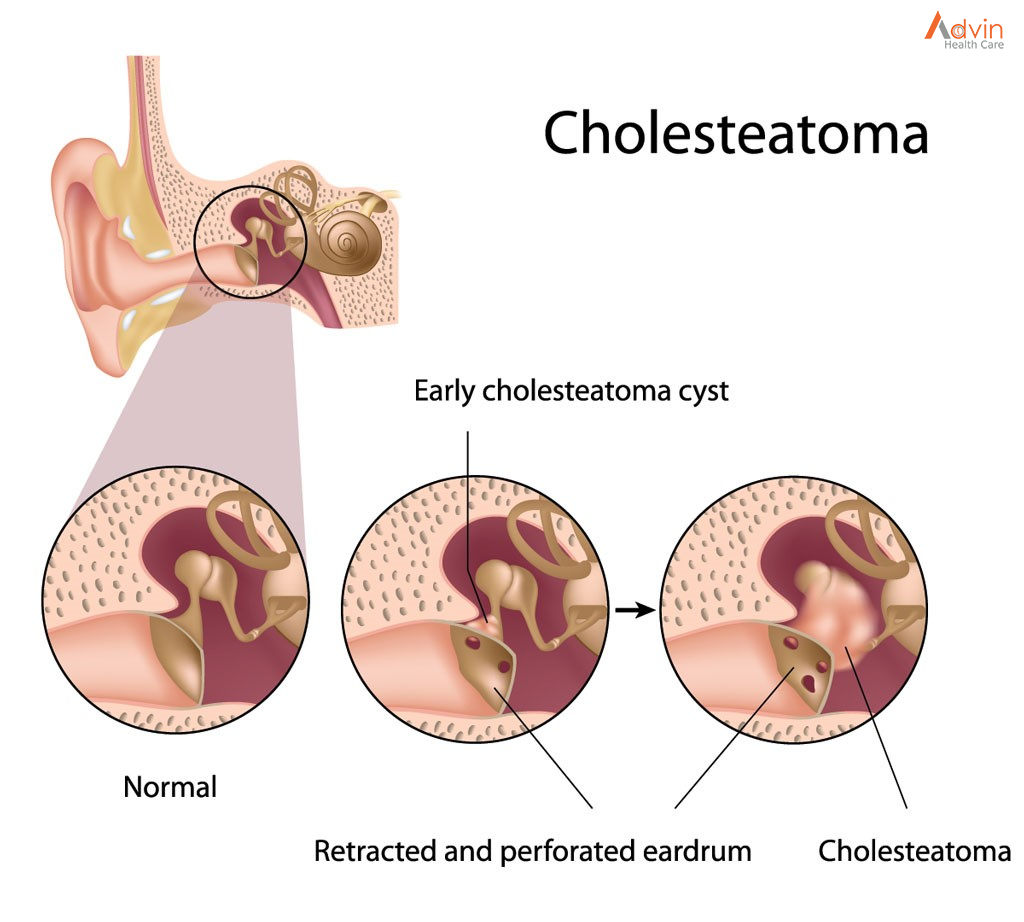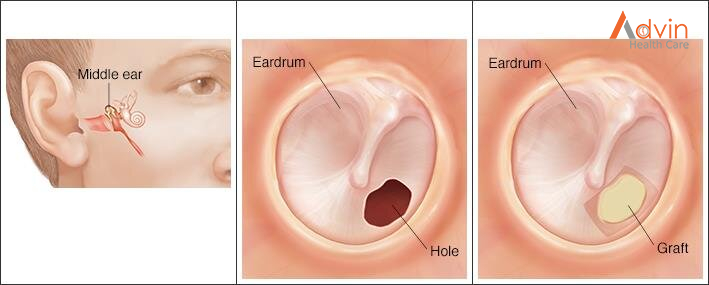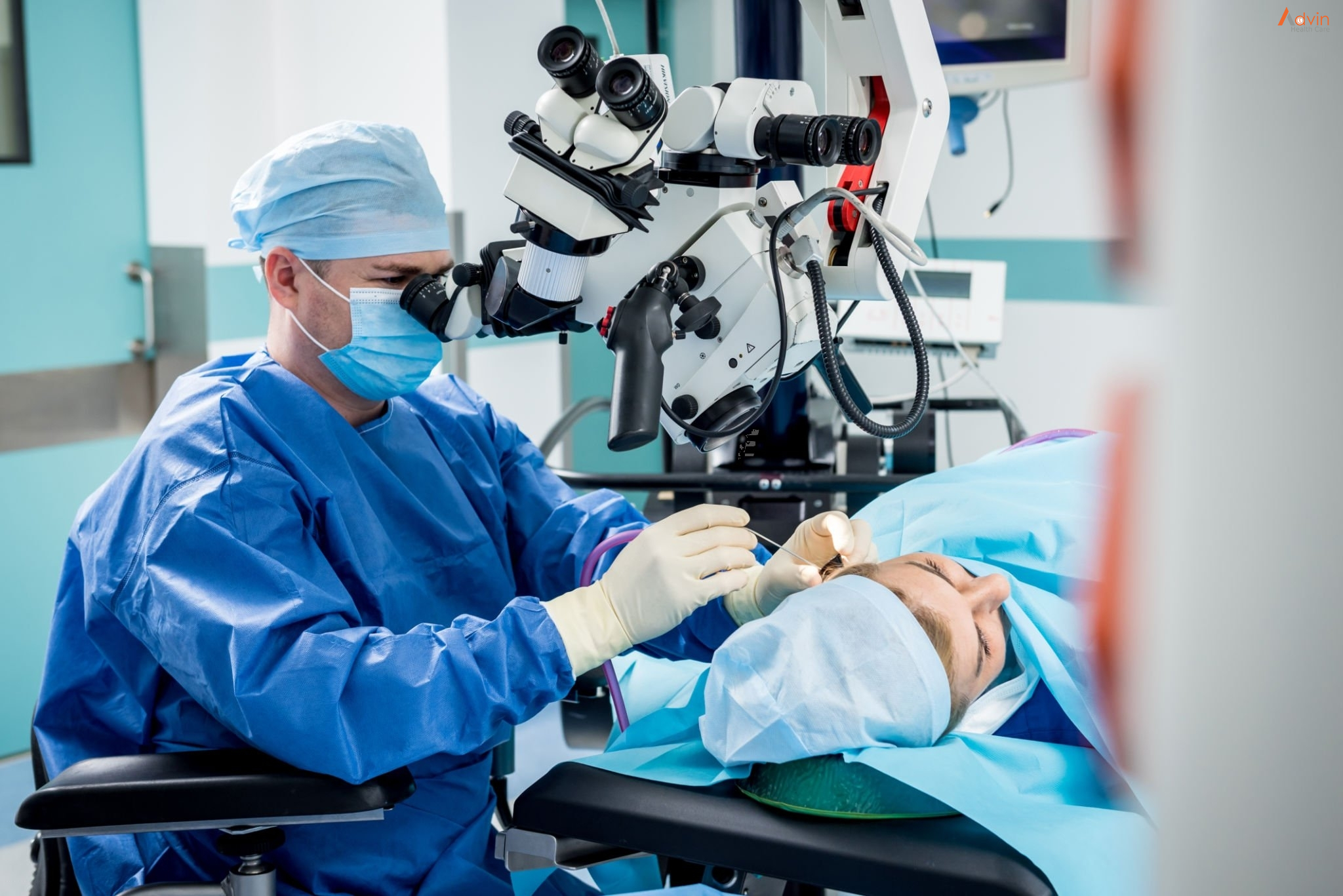Tympanoplasty is the surgical procedure performed to repair a perforated TM, with or without reconstruction of the ossicles (ossiculoplasty), with the aim of preventing reinfection and restoring hearing ability. CSOM is the most common indication; large invasive cholesteatomas may require a mastoidectomy as well as reconstruction of the TM. The history of tympanoplasty began in the 1950s when Wullstein and Zollner popularized the technique of using overlay graft to reconstruct the perforated TM and restore the sound conduction apparatus of the middle ear. Since then, surgical approaches to tympanoplasty have been modified, as described herein.
Why Is a Tympanoplasty Done?
Doctors do a tympanoplasty when the eardrum (or tympanic membrane) has a hole that doesn’t close on its own. It is done to improve hearing and prevent water from getting into the middle ear.
Kids can get a hole in an eardrum from:
- infections that cause the eardrum to burst
- ventilation (ear) tubes that fall out or are removed
- injury, such as puncturing the eardrum with a cotton swab
- cholesteatoma, a growth within or behind the eardrum
Most of the time, the eardrum can repair itself. So at first, doctors closely watch a hole in a child’s eardrum rather than fix it right away. They might wait years to repair one in a very young child. This lets the ear develop enough to help prevent complications after the surgery. Surgery might also wait if a child has ongoing problems with ear infections.

Mastoidectomy
Mastoidectomy is the portion of the operation in which the surgeon removes diseased air cells (cholesteatoma matrix) from the mastoid bone. These diseased cells lie behind the honeycombed cavity (mastoid) in the temporal bone located at the sides and base of the skull behind the ear.
Mastoidectomy is typically required for patients with middle ear infections (chronic otitis media – COM), a long-standing infection affecting the middle ear and frequently accompanied by cholesteatoma (a destructive, non-cancerous skin cyst) or an unhealed eardrum perforation. This infection, if left untreated, can spread into the skull, as well as cause significant hearing loss, dizziness, and brain erosion.
The Tympan Mastoidectomy Procedure
Tympan mastoidectomy procedure is performed in a hospital setting under general anaesthesia and typically takes several hours. During the tympan mastoidectomy, incisions are made inside and behind the infected ear. The middle ear and mastoid bone are opened and the infected tissue or the cholesteatoma is removed. The eardrum is repaired with muscle lining from behind the ear.
After the tympan mastoidectomy is completed, the surgeon will place packing inside the ear to keep tissues in place as they heal. Most tympan mastoidectomy patients can be released after an overnight observation, unless they are experiencing nausea or dizziness.
Tympanoplasty and Mastoidectomy Postoperative Instructions
Tympanoplasty and Mastoidectomy recovery typically involves 1-2 weeks off of work or school. An initial follow-up appointment should take place one week after surgery for suture removal, after which most normal activity can resume. Packing will be removed periodically as the ear heals.
In some cases, a minor skin grafting procedure (Thiersch grafting) may need to be performed to assist the healing process and avoid infection. During Thiersch grafting, a layer of skin from the inside of the upper arm is transplanted over the surgical area in the ear. This grafting is usually done 10 days after the patient undergoes the tympanomastoidectomy.
It is important to closely follow your doctor’s instructions after the tympanomastoidectomy, including:
- Do not blow your nose for at least 2 weeks after your procedure. Blowing the nose can cause pressure build-up in the ear and displace the eardrum patch. If you sneeze, keep your mouth open.
- Do not allow any water to enter the ear. Place Vaseline-coated cotton inside the ear while showering. Any water in the ear can cause infection.
- Do not fly for 6 weeks after surgery. Air pressure changes could negatively impact your recovery.
- Apply antibiotic ointment to the ear canal and the incision behind the ear, as instructed.
- Avoid heavy lifting or being fatigued.
- Take antibiotic and pain medications as directed.
It is normal, after a tympanomastoidectomy, to have a bloody or watery discharge from the ear canal, as well as from behind the ear. You may experience some popping sounds in the ear during the first few months after surgery, as the ear heals. You should not be concerned about your hearing for 6-8 weeks after the tympanomastoidectomy, at which time your hearing will be evaluated.
During Tympnoplasty Surgery

Tympanoplasty surgery is done with in-patient hospitalization, meaning that you have to stay for 24 hours in the hospital after the surgery is completed. The surgery is usually done with general anaesthesia. The surgeon can either enter the inner ear via an ear canal (transcanal approach) or by making an incision behind the ear (postauricular approach). The process is done to reach the tympanic membrane perforation. The surgeon then uses two techniques to perform the surgery: underlay or overlay.
In the underlay technique, the graft is placed under the existing eardrum with a foam-like material that easily dissolves after several weeks. The eardrum uses the graft to cover the area of perforation. In the overlay technique, the surgeon removes the eardrum and places the graft to cover all the areas of the eardrum. The skin of the ear canal uses the graft to build a new eardrum. Once the graft is placed in the proper location and held in a foam-like material, the surgeon then sutures the incision and packs it with dressing. The whole surgery usually takes around two years to be completed.
Advin Tympanoplasty Products
- Hartman Ear Speculum
- Aural Speculum Shea
- Plaster Retractor
- Wullstein Retractor
- Tilley Dressing Forceps
- Suction Cannula
- Suction Adopter
- Mastoid Suction Cannula
- Micro Crocodile Forceps Serrated Straight
- Micro Crocodile Cup Forceps Straight
- Micro Crocodile Scissors Straight
- Mc. Gee Wire Crimper
- House Dieter Malleus Nipper Upward
- Hand Retractor
- Wullstein Needle Straight
- Wullstein Needle Slightly Curved
- Plaster Flap Knife
- Rosen Circular Knife
- Sickle Knife
- Micro Pick
- Micro Instruments Case With Double Silicon Matt Large



